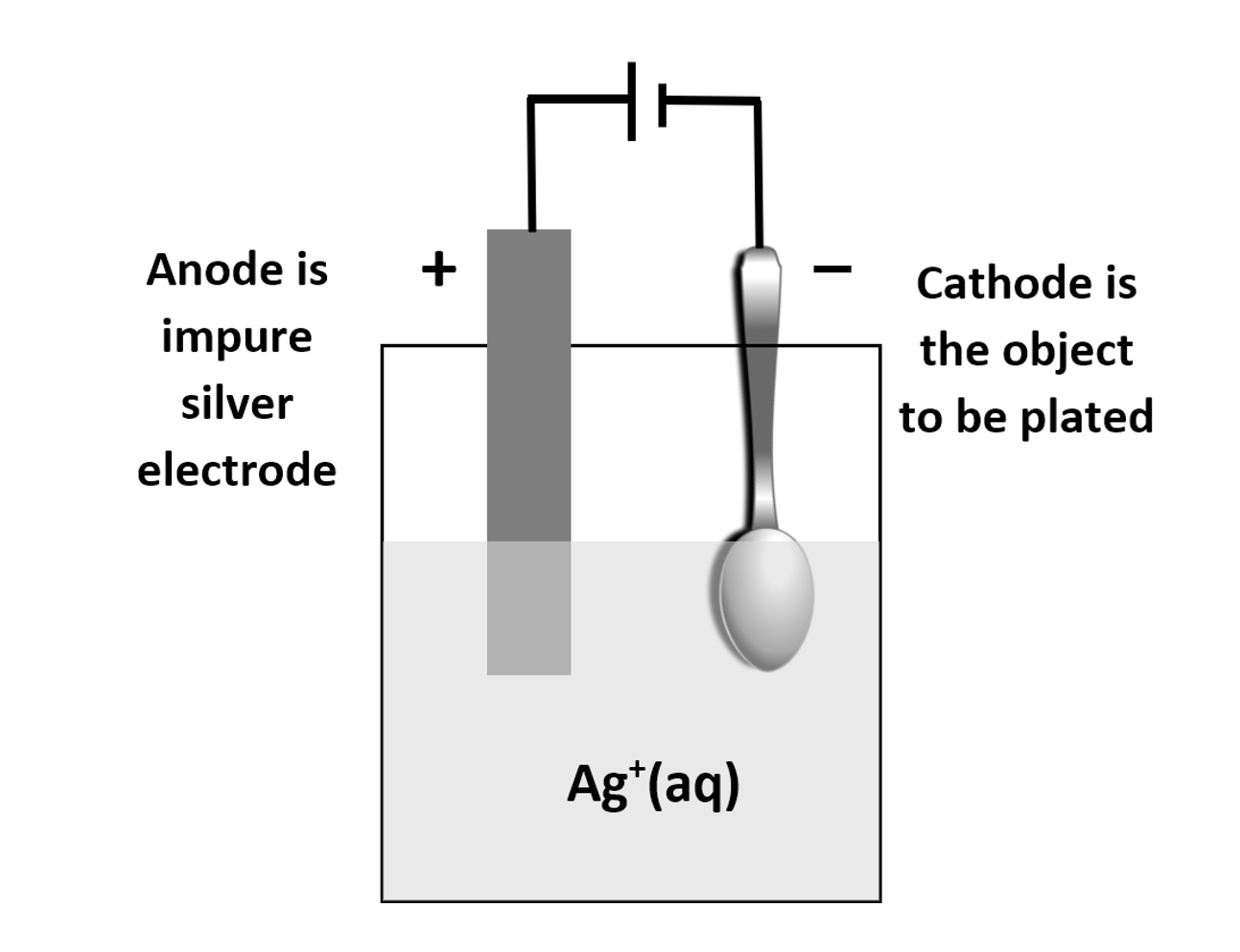Electroplating and Electrolytic Cells
Electroplating
Electroplating is a process that uses an electrolytic cell to coat an object (usually the cathode) with a thin layer of metal.
By passing an electric current through an electrolyte solution containing metal ions, we can deposit a layer of metal onto the object.
ExampleTo coat a steel ring with copper:
- The electrolyte would be a solution of copper(II) sulfate $ \text{CuSO}_4 $.
- The cathode (negative electrode) would be the steel ring.
- The anode (positive electrode) would be a piece of copper metal.
This setup allows copper ions from the solution to deposit onto the steel ring, while copper atoms from the anode replenish the ions in the solution.
The Role of Electrodes in Electroplating
In an electrolytic cell, the roles of the electrodes can be summarized as follows:
- Anode (Positive Electrode):
- Oxidation occurs here, where metal atoms lose electrons and form ions that enter the solution.
- Cathode (Negative Electrode):
- Reduction occurs here, where metal ions from the solution gain electrons and deposit as solid metal onto the object.
Writing Half-Equations for Electroplating
- To understand the chemical changes, we write half-equations for the reactions at each electrode.
- Let’s use the example of copper electroplating:




